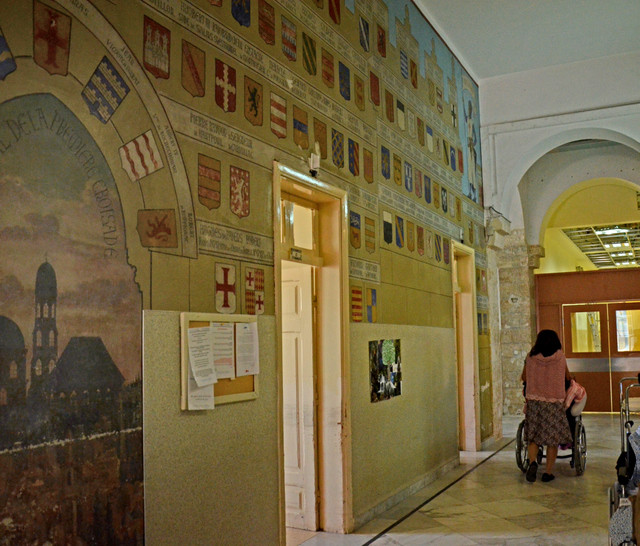Wall Paintings Depicting Crusader History Discovered in Jerusalem

Wall paintings that depict the history of the Crusaders of Jerusalem have been discovered at a 19th century hospital near the Old City.
The paintings were exposed when sisters of Saint-Louis Hospital, which is located outside the Old City walls, were organising the hospital's store rooms, according to Israel Antiquities Authority (IAA).
The wall paintings are said to be done by the hospital's founder De Piellat, a French count and an artist, and represent figures and symbols that recount the history of the Crusader period (1099–1291 CE).
"Piellat adorned the walls of the hospital and its ceiling with huge paintings portraying Crusader knights in their armour and wearing swords," IAA said in a statement.
"The paintings are in the style characteristic of monumental church decorations of the nineteenth century, with close attention to small details and motifs drawn from the world of medieval art."
"He also added the symbols of the Crusader cities, symbols of the military orders and monastic orders."
It added: "The sight was spectacular; the enormous halls and endless rooms of the hospital were illuminated with the Crusader history of Jerusalem."
De Piellat also painted the symbols of the French knights' families and wrote their names and genealogy alongside the crusader figures.
According to IAA authorities, De Piellat considered himself the last of the Crusaders who had ruled Jerusalem from early 10th century until late 13th century, and wished to continue their work.
He founded the hospital, which treats chronic diseases, between 1897 and 1896. The hospice was named after St Louis IX, King of France and the leader of the Seventh Crusade (1248–1254 CE), and was opened to the public in 1896.

Hidden frescoes
In addition to the Crusader wall paintings, frescoes concealed beneath modern plaster and paint were also revealed on the hospital's wall.
The frescoes are thought to have been covered with black paint by the Turks who took possession of the building during the First World War.
IAA officials said that De Piellat devoted the last years of his life trying to remove the black paint and re-exposing the "breathtaking" frescoes until he died at the hospital in 1925.
"Interest was recently renewed in the lost and concealed wall paintings when they were revealed once again in all their glory. These magnificent paintings are a piece of history and a rare work of art. Funds are currently needed for their conservation, exposure and documentation," IAA said.
© Copyright IBTimes 2025. All rights reserved.






















